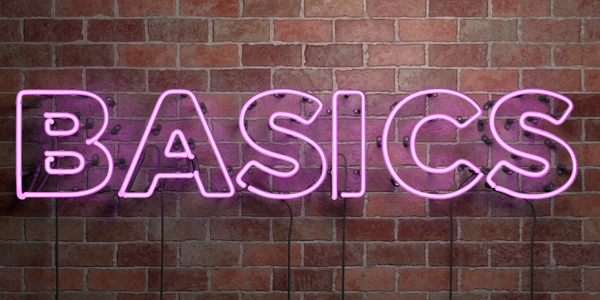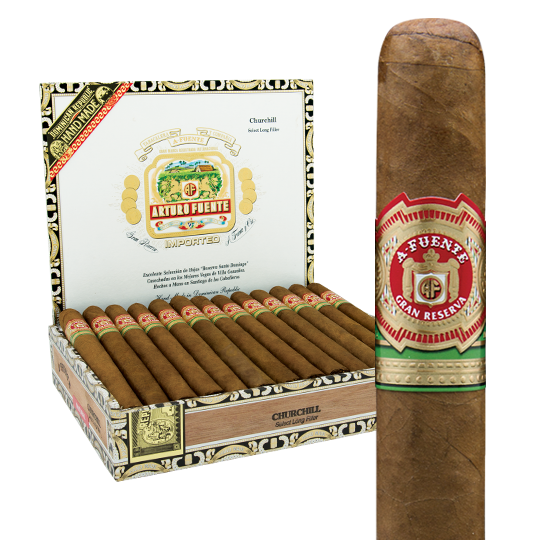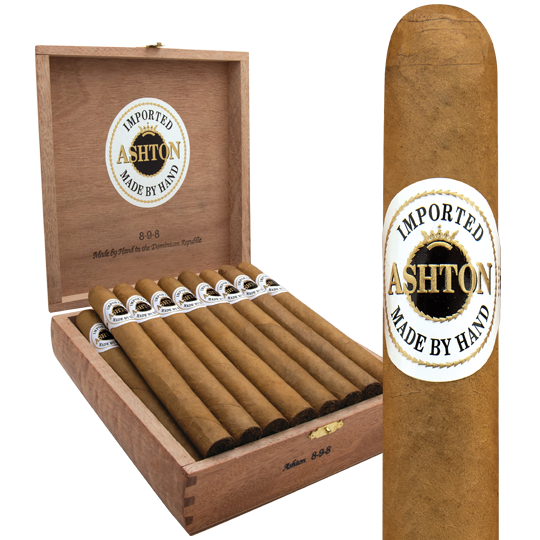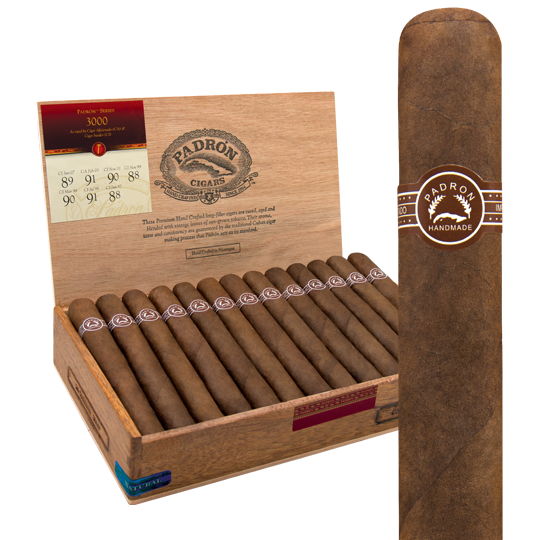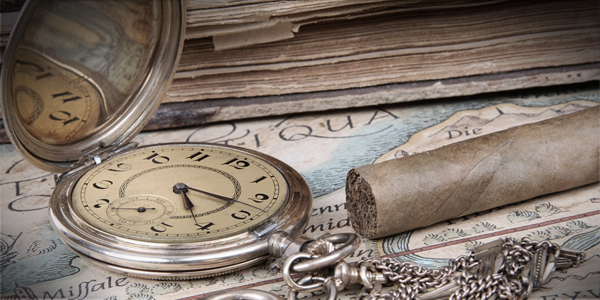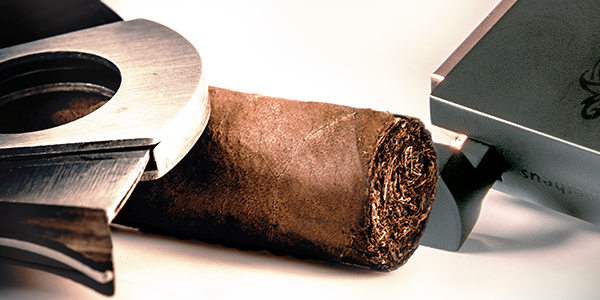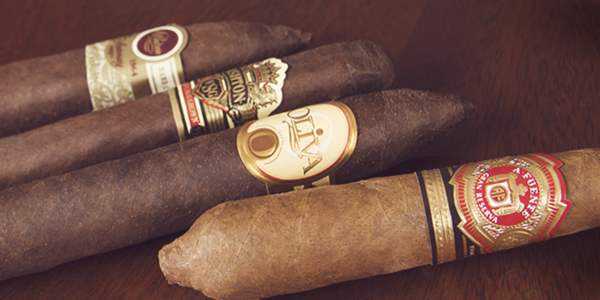Cigar Basics: How to Look Like You Know What You’re Doing
Smoking cigars is fun and relaxing, but it can be intimidating for new cigar lovers. Before you can enjoy a cigar, you should learn how to cut and light it the right way. Once you get a few cigar basics down, you can refine your palate by keeping track of the cigars you like and the ones you don’t. Premium handmade cigars share a lot in common with wine. The different regions where the tobacco is grown, how it’s blended, how long it’s aged, and what shape it’s rolled in influence the taste and the strength of a cigar. Learn all you need to know in our quick and comprehensive crash course in cigars 101.
History of Cigars
Native populations in Central America and Mexico were likely the first to smoke tobacco in a form of rolled up leaves resembling what we know today as a cigar. Mayans play a major role in cigar history. Mayans are depicted smoking tobacco on ancient clay pottery. “Cigar” is derived from the Mayan word, “sicar,” meaning to smoke tobacco leaves. Tobacco migrated with the Mayans as far north as Canada and down into Chile, as well as the Caribbean islands.
Christopher Columbus is credited with introducing tobacco to Europe, where it became a coveted commodity among the elite who would even use it as currency. Tobacco seeds were planted and grown in Connecticut around 1640. The popularity of pipe tobacco and cigars soared globally. However, when England captured Havana from Spain, for roughly nine months in 1762, the exportation of cigars to Europe exploded. England pushed more international shipping through Cuba in under a year than Spain had in the previous two centuries.
Tobacco production in America shot up significantly too. At one point, the Connecticut River Valley was home to more than 30,000 acres of premium tobacco crops. By 1860, nearly 1,500 cigar factories operated in the U.S. In 1920, eight billion cigars were made in America where the advent of cigar-making machines drastically increased production. Demand for Cuban cigars (that sold between 35 cents and $2 apiece) cooled during the Great Depression, while cigars that cost a nickel outsold all others.
When Fidel Castro took control of Cuba in 1959, the premium cigar industry changed forever. A mass exodus of cigar-makers and their families fled to the States and other Central and South American countries where they sought to re-establish their beloved tobacco farms and cigar factories. Cuban cigars became “forbidden fruit” in the U.S. due to the Cuban trade embargo, but they’ve been known to lack the quality and consistency of cigars made in the Dominican Republic and Nicaragua.
By the mid-1990s a modern cigar boom was underway, and demand for premium cigars skyrocketed. World-renowned brands like Arturo Fuente, Ashton, Padron, My Father, and Oliva have proven the mystique behind Cuban cigars is largely myth. Exceptional tobacco can be planted, harvested, and aged by cigar-makers in a variety of other countries. Many of today’s best cigars are handmade with tobacco grown in the Dominican Republic, Nicaragua, Ecuador, Mexico, and Connecticut. And, many of the families who make the best cigars hail from Cuba, but they left because they want to make and sell premium cigars for consumers in the U.S. – the largest market for handmade cigars in the world.
Cigar Shapes & Sizes
Why are there so many cigar shapes and sizes? A cigar’s length is measured in inches, and its thickness, or ring gauge, is measured in 64ths of an inch, the same way your finger is measured when you are fitted for a wedding ring. A standard Robusto is 5 x 50, or 5 inches long with a 50 ring gauge (50/64ths of an inch).
A cigar’s shape and size affects its intensity, its draw, and the length of time it will burn. Another name for a cigar’s shape is “vitola.” There are two kinds of vitolas: parejos and figurados. Parejos are straight-sided cigars, like a Robusto or Toro, that do not taper. A figurado is any cigar that is not straight-sided, like a Belicoso, Torpedo, or Perfecto.
Some cigars, like Padrón, are box-pressed, where the cigars are pressed into a square shape. This is a manufacturer’s preference. A number of box-pressed cigars perform well with the critics, but it’s incorrect to assume box-pressed cigars are better than round vitolas, or vice versa.
Thinner cigars burn hotter and faster than thicker shapes, which deliver a cooler draw. Longer sizes are more approachable in the beginning because the smoke travels a further distance and cools down before it reaches your palate. If you’ve only got a half hour to smoke, don’t smoke anything larger than a Corona or Robusto. If you can smoke for over an hour, choose a Churchill or Double Corona. Here are the most common cigar shapes you will encounter and their dimensions.
| Parejos | Dimensions |
| Corona | 5.5 x 44 |
| Churchill | 7 x 50 |
| Corona Gorda | 5.625 x 46 |
| Double Corona | 7 x 52 |
| Petit Corona | 4.375 x 42 |
| Gordo | 6.5 x 60 |
| Lancero | 7.5 x 38 |
| Panatela | 6 x 36 |
| Lonsdale | 6.625 x 44 |
| Robusto | 5 x 50 |
| Toro | 6.25 X 52 |
| Figurados | Dimensions |
| Belicoso | 5.5 x 54 |
| Perfecto | Varies |
| Torpedo | 6.125 x 52 |
Wrappers
The wrapper leaf on a premium cigar is the most expensive part of a cigar’s anatomy. On top of delivering perfect flavor and harmonizing with the binder and filler tobaccos inside a cigar, the wrapper must be visually pristine. The wrapper is the first thing we notice when we shop for cigars. A cigar’s color is not an indication of its strength, but it communicates quality. Desirable wrappers are smooth, seamless, and often oily. Cigars are blended with wrappers from a variety of countries and regions. Here are the most common types of wrappers you’ll find on premium cigars:
- Cameroon cigars are rolled with a wrapper grown in the nations of Cameroon or the Central African Republic. The most famous Cameroon cigars are Arturo Fuente Hemingway and Arturo Fuente Don Carlos.
- Candela cigars stand out because they are green. Candela wrappers get their color because the leaves are harvested and dried before the tobacco plant is fully mature, which locks in the plant’s natural chlorophyll content. The best Candela cigars deliver light, grassy notes of cedar and hay.
- Connecticut cigars have been popular for hundreds of years. Connecticut Shade is the quintessential golden-blond wrapper found on iconic cigars like Ashton Classic, Macanudo Cafe, and Montecristo. Creamy, mild flavors of cedar, coffee bean, and buttered toast are hallmarks of the best Connecticut wrappers. Shade Grown wrappers are grown under sprawling sheets of nylon or mesh which prevent direct sunlight from reaching the tobacco resulting in its milder taste. Ecuador Connecticut cigars, or cigars rolled with Connecticut-seed wrappers grown in Ecuador, are sometimes classified as Connecticut.
- Corojo cigars are finished in a spicy wrapper that was originally grown in Cuba. Today, Corojo wrapper is grown in Nicaragua and Honduras. Peppery and earthy flavors characterize cigars like Kristoff Corojo Limitada and Rocky Patel The Edge.
- Habano cigars are finished in wrappers grown from Cuban seeds. The most common varietal is Ecuador Habano, or Cuban-seed tobacco grown in Ecuador. Ashton Symmetry is an excellent example of a premium cigar with an Ecuador Habano wrapper.
- Maduro cigars are dark in color and sweet in taste. Maduro is not a varietal, technically, but a fermentation process. Many different wrappers are classified as Maduro. The most common Maduro, Connecticut Broadleaf, is found on Arturo Fuente Anejo and Oliva Master Blends 3.
- Natural cigars, like Maduros, are not a varietal. Natural is primarily used to classify cigars rolled with lighter wrappers, like Connecticut Shade and Ecuador Connecticut. Creamy and mellow notes of cedar, almond, cashew, and coffee bean show up in many Natural cigars. Natural is also loosely used to classify many cigars that are simply not Maduro.
- San Andrés cigars like La Aroma de Cuba Mi Amor and Oliva Serie V Melanio Maduro deliver dark, peppery, and sweet profiles that are a touch stronger. San Andrés wrappers are grown in Veracruz in Mexico where cool temperatures, humid breezes, fresh water, and fertile volcanic soil create a natural landscape for growing superior tobacco.
- Sumatra cigars can be those rolled with an Indonesian wrapper, like Flor de Oliva, but Ecuador Sumatra, or Sumatra-seed wrapper grown in Ecuador, is a more common varietal. Ashton VSG is one of the most popular and highest rated Ecuador Sumatra cigars due to its robust profile of cedar, leather, and espresso bean.
Cutting Your Cigar
How you cut your cigar makes a difference in how it smokes. The reason why we cut cigars is because the end that we put in our mouth, or the head, is closed. In order to puff on a cigar and draw air through it, the cap, or the tip of the head, must be cut or opened up. There are three types of cutters to consider: a straight cutter, a punch cutter, and a V-cutter. Here’s how each cutter affects your cigar.
- A straight cutter, or guillotine cutter, slices the top of the cap off your cigar. A straight cutter will give you the easiest draw on a cigar. Straight cutters come in many designs. Some are made with retractable blades. If you smoke big ring gauge cigars, you should get a big ring cutter with a larger aperture to accommodate thick shapes.
- A punch cutter, or bullet cutter, removes a small hole from the cap when you insert the circular blade into the head. A punch cut creates a concentrated draw, and your cigar may burn slower as a result. You cannot use a punch cutter on a Torpedo because the cigar’s head is tapered to a sharp point.
- V-cutters have become increasingly popular in recent years. A V-cutter, also called a wedge cutter or a cat’s eye, removes a V-shaped portion of a cigar’s cap. A V-cutter creates a more concentrated draw by pulling smoke from the top and bottom parts of a cigar and blending it directly on your palate.
Lighting Your Cigar
How you light your cigar affects its flavor. There’s a right way and wrong way to light a premium cigar. Butane cigar lighters, wooden matches, and cedar spills deliver the best results. Whatever method you choose, be patient. Hold the flame away from the foot of your cigar and gently roast it. Take an occasional puff as you rotate the foot of your cigar over the flame until the entire circumference is evenly lit. Stay away from liquid fuel lighters like Zippos. Liquid fuel is not refined and will taint the flavor of your cigar. Lighting a cigar off a burning candle is a bad idea too.
Smoking Your Cigar
Start by smoking the best mild cigars before you graduate to stronger blends. The time of day and what you’ve had to eat can determine the best time to smoke a mild, medium, or strong cigar. One important rule stands out when you smoke a cigar: do not inhale. Premium cigars are handmade with whole-leaf tobacco that is humidified and much stronger than cigarettes, for example. Puff on your cigar and draw the smoke into your palate, but don’t inhale it into your diaphragm, or you will cough. Take a puff every minute or so, but give yourself enough time to taste all the nuances a good cigar offers. You can push the smoke out through your nose to access its aroma directly. If you smoke a cigar too fast, it can wind up tasting bitter, burning hot, and you’ll be left with a bad aftertaste in your mouth.
Gently tap the ash off as it develops, but don’t knock your cigar against the ashtray repeatedly or you can crack the wrapper. Monitor the end of your cigar to make sure it burns evenly.
Basic Cigar Etiquette
There are plenty of unwritten rules when it comes to smoking cigars. Licking your cigar or dipping it in whiskey are questionable practices. Cutting and lighting your cigar the right way prevents problems from occurring while you smoke it. Be courteous, and bring enough cigars for everyone if you’re smoking with a group. When you get to the end of your cigar, remove the band and discard it. Don’t smoke it or let it smolder in the ashtray. Empty your ashtray, and don’t mash your cigar out in it – let it go out on its own. Good cigar etiquette goes a long way when you’re smoking with other aficionados.
How to Buy Cigars
Visit a quality retail cigar store to shop for cigars. The staff in a quality establishment is always welcoming and knowledgeable. They will answer all your questions and provide plenty of recommendations. If you’re a new cigar lover, they will point you toward the best beginner cigars. There are differences to buying cigars online versus in a retail shop, but both are valuable resources for products and expertise. Consider keeping a cigar journal to record the cigars you smoke. As your knowledge grows and your palate develops, you’ll know exactly what brands to pick up when you buy premium cigars online. Sign up for our weekly specials and buy your favorite cigars for a big discount. At Holt’s, we have over 550 brands to shop. What are you waiting for?

